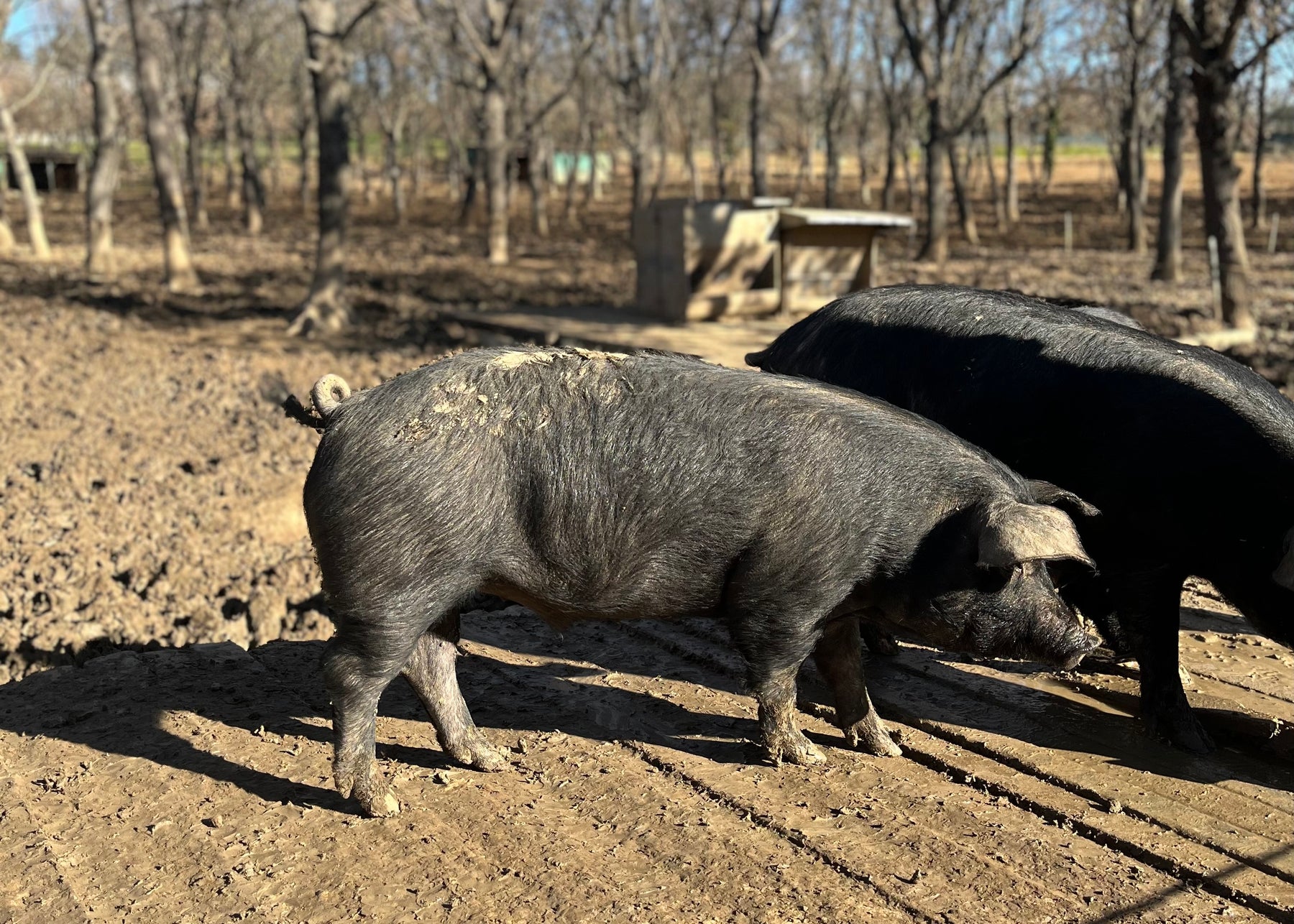
Black Pigs, Abruzzo
4 years ago, Luciano Costantini, a 3rd generation salumaio from Abruzzo/Marche border joined together with Tommaso Sturmo to create Costantini Slow. In the April Long Read we're telling their story together with info on the new products we're getting from them, black pigs, truffles and the drought that is devastating agriculture in northern Italy. I've put wholesale prices at the end.
40 years ago, Giovanni Sturmo planned on becoming the first truffle farmer in Abruzzo. Farming black truffles wasn’t new – they had been cultivated in France since the 1800s by transplanting seedlings that had been collected at the foot of oak trees that were known to host truffles and this practice continued widely until the devastation of World War I, but in Italy farming truffles had never caught on.
Giovanno planted his oaks in Mosciano Sant'Angelo but what he soon found out was that truffles only grow when environmental conditions (temperature range, well-marked seasons, and reliable rainfall) and soil (well drained and alkaline) are exactly right. Unfortunately by the time his oaks had reached maturity the climate had started to change and with it this delicate balance was disturbed
Today, the region of Abruzzo has more truffle farms than any other and 40% of all Italian black truffles come from there but back in the 1980s Giovanni was ahead of his time and his 9 hectare plantation was abandoned until, in 2018, his grandson Tommaso decided that it would make the perfect habitat for pigs – hardy black pigs much better adapted to this environment. Today the oaks provide shelter from the fierce summer heat as well as an autumn crop of acorns for Tommaso’s 200 pigs to eat.
The only buildings are brick sties in the pens where the sows come to farrow. Cool, spacious and cushioned with straw the piglets stay here with their mothers for their first 7 weeks. After that and during all stages of their development the pigs are moved around the woodland using portable electrified wire to keep the soil healthy and fertile. This kind of rotational grazing also means that Tommaso can keep up to 25 pigs per hectare and still ensure that their diet has plenty of grasses, roots, herbs and tubers which will give flavour to the meat. Their constant exercise while foraging also improves the texture of it. Without rotational grazing the density of pigs per hectare goes down to 8
When they are slaughtered at 24 months Tommaso’s work is done and his partner Luciano Costantini, a 3rd generation salumaio from the Abruzzo/Marche border can get to work. The pigs are Nero d’Abruzzo, with a thick layer of creamy fat which is full of omega 3 fatty acids from so much foraging that is perfect for making salumi. The Nero d'Abruzzo is not one of the 6 rare breeds recognised by the ministry of agriculture (the Calabrese, Mora Romagnola, Nero dei Nebrodi, Pelatella or Casertana, Cinta Senese and Sarda) but Tommaso and Luciano are working towards this. Their range of salumi is made with no preservatives other than salt and is seasoned with Montepulciano d’Abruzzo wine.
We visited Tommaso and Luciano in February when, after over a year of virtually no rain, the Adriatic had encroached 12 miles inland from the Po estuary filling aquifers and making them unusable for irrigating farmland. This 'King of Rivers' is at its lowest level for 70 years and, last summer, drought led to hundreds of thousands of hectares of flatlands along the Po basin being left fallow. As a consequence, the cost of Tommaso’s pig feed - a lot of which comes from the vast maize plantations of Veneto - is now sky high. We hear the same from all our suppliers and today Italians are looking anxiously to the next couple of months for rain to prevent another year of severe drought.

